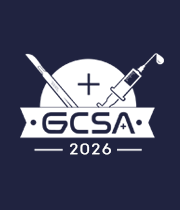Robotic and Computer-Assisted Surgery
Precision, control, and visualization have reached new heights with the growing integration of robotic and computer-assisted surgery. These technologies are not merely tools but extensions of the surgeon’s capabilities, offering micro-movements, tremor reduction, and 3D visualization in complex anatomical fields. With robotic systems, surgeons can now perform intricate procedures with improved consistency and fewer complications, especially in urologic, gynecologic, and cardiothoracic specialties. Moreover, real-time data analysis and image guidance through computer-assisted platforms enhance surgical planning and execution. As training models evolve and costs become more manageable, the adoption of robotic-assisted systems is expanding rapidly worldwide. These advances promise not only increased accuracy and better outcomes but also a fundamental redefinition of surgical standards and expectations for both clinicians and patients.



Title : Spontaneous colonic perforation in a pediatric patient with acute febrile lllness: A case report
Abhiraj Yadav, Manipal College of Medical Sciences, Nepal
Title : Unusual cause of small bowel obstructions in infants: A warning letter to parents
Gamal Al Saied, Al-Azhar University, Egypt
Title : From panic to protocol: A ?IP on developing a paediatric breast referral pathway
Neriah Mangion, University Hospital Sussex NHS Foundation Trust , United Kingdom
Title : Improving scrotal examination in male patients presenting with acute abdominal pain: An audit and quality improvement intervention
Maab Elsaddig, University Hospital Lewisham, United Kingdom
Title : Mapping pediatric general surgery training in low and middle income countries: A scoping review
Habba Mahal, University of Alberta, Canada
Title : Improving implementation of enhanced recovery after cesarean section protocol in resource limited setting of Koidu Government Hospital Sierra Leone 2024/25. A quality improvement project from evidence to reality
Hailemariam Getachew, PIH, Sierra Leone